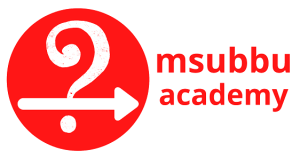CRE-Peer Discussion - Session-1
23-July-2025, 7 to 8 pm
Quick Recap:
Karthikeyan led detailed explanations of reactor concepts, stoichiometry, and reaction calculations, including demonstrations of volume change calculations and autocatalytic reactions in CSTRs. The session concluded with discussions on reaction order determination, reactor optimization, and practical applications of reactor design equations, with emphasis on preparing for industrial placements and exams.
Next Steps:
- Students to practice solving more problems related to ideal reactors and combinations of reactors.
Students to practice using the online scientific calculator provided for the GATE exam.
SUMMARY:
Isobaric Reactor Volume Calculations
Karthikeyan led a discussion on ideal reactors and the combination of reactors in series or parallel, building on previous videos by Sir. He explained the concept of volume change in isobaric batch reactors and demonstrated how to calculate the fractional change in volume using an example problem. Karthikeyan emphasized the importance of understanding the stoichiometry of the reaction to determine whether the volume increases or decreases. He also highlighted the need for interactive participation in the peer discussion sessions and addressed Smrti's question about finding the volume at complete conversion, clarifying that the initial volume (\(V_0\)) cancels out in the calculation.
CSTR Autocatalytic Reaction Calculations
Karthikeyan explained the concept of autocatalytic reactions and their application in ideal continuous stirred-tank reactors (CSTRs). He demonstrated how to calculate the space time (\(\tau\)) for a reaction with 90% conversion, using the relationship between concentrations of reactants and products. The solution involved using the design equation for the CSTR and the conservation of mass principle. Karthikeyan emphasized the importance of understanding how terms cancel out in the equations to find the final result.
Reversible Reaction Rate Constants
Karthikeyan explained a method to solve a problem involving a reversible reaction with two unknown rate constants, \(k_1\) and \(k_2\). He outlined the steps to find the relationship between \(k_1\) and \(k_2\) using two cases with different residence times and concentrations, and emphasized the importance of using the given conversion values to save time. Karthikeyan also mentioned that the equations can be solved using algebraic methods or a calculator, but advised against using a scientific calculator for this purpose.
Equilibrium Conversion and Reactor Calculations
Karthikeyan explained the concepts of equilibrium conversion and its practical limitations in industrial reactions, noting that actual conversions are typically 75% of equilibrium values due to real-world constraints. He then demonstrated how to calculate space time in a CSTR reactor using given rate equations and concentrations, arriving at an equilibrium conversion of 66.7% and an actual conversion of 50%. Finally, Karthikeyan introduced a problem involving a combination of reactors with varying temperatures and rate constants, asking students for their approach to solving it.
Reaction Order Determination Method
Karthikeyan explained the method to determine the reaction order by comparing the outlet streams of two CSTRs. He demonstrated that a first-order reaction cannot explain the given volume ratio, leading to the conclusion that the reaction is not first-order. Karthikeyan emphasized the importance of accurate calculations and recommended practicing with the scientific calculator provided by Sir, which is similar to the one used in the gate exam.
Reactor Volume Optimization Strategies
Karthikeyan discussed the optimization of reactor volumes, emphasizing the importance of minimizing total volume to reduce costs in industrial settings. He explained the process of finding the conversion in the first reactor that minimizes the total volume of two reactors, using differentiation and design equations. Karthikeyan also covered a problem involving two CSTRs in series, highlighting the need to reverse the calculation process to find initial concentrations. He encouraged students to practice similar problems to enhance their understanding and preparation for placements.
